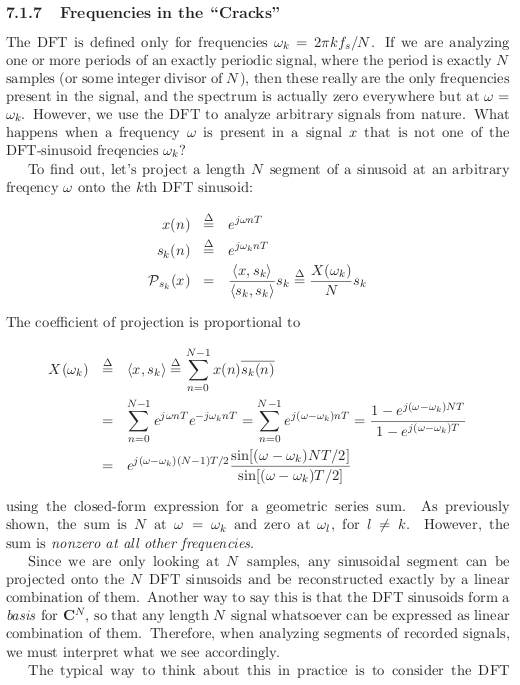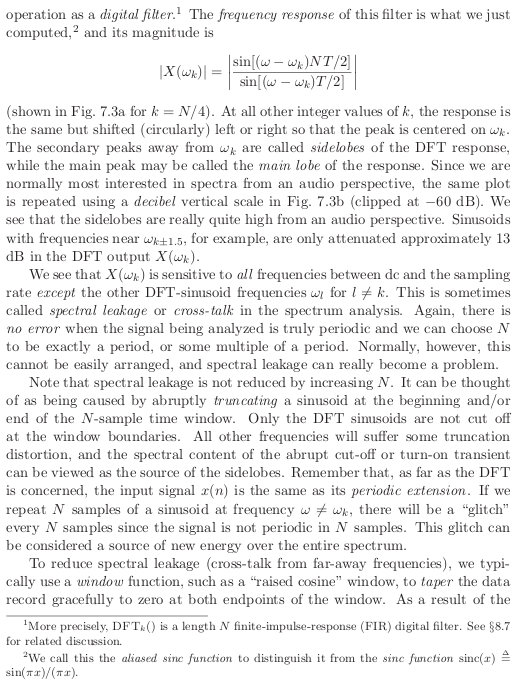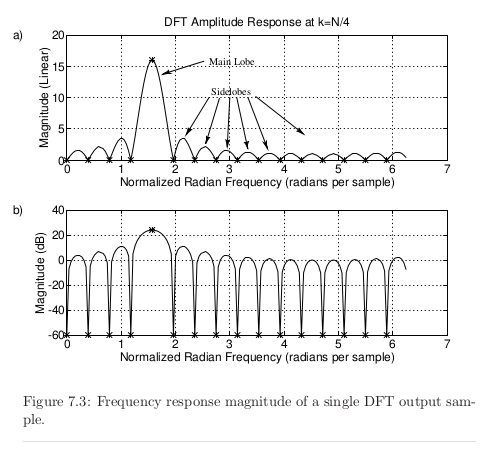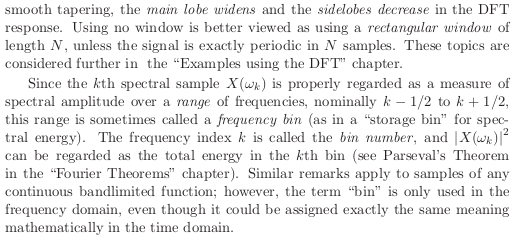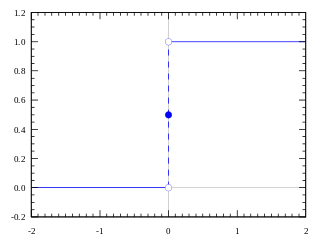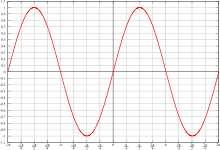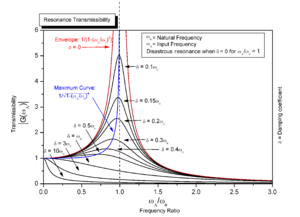如果此時回顧
擊鼓,鼓身靜而鼓面動;操琴,琴弦振然琴柱止。這帶出了『物理現象』之
在微分方程中,邊值問題是一個微分方程和一組稱之為邊界條件的約束條件。邊值問題的解通常是符合約束條件的微分方程的解。
物理學中經常遇到邊值問題,例如波動方程等。許多重要的邊值問題屬於Sturm-Liouville問題。這類問題的分析會和微分算子的本徵函數有關。
在實際應用中,邊值問題應當是適定的(即:存在解,解唯一且解會隨著初始值連續的變化)。許多偏微分方程領域的理論提出是為要證明科學及工程應用的許多邊值問題都是適定問題。
最早研究的邊值問題是狄利克雷問題,是要找出調和函數,也就是拉普拉斯方程的解,後來是用狄利克雷原理找到相關的解。

圖中的區域為微分方程有效的區域,且函數在邊界上的值已知
───
數理之探究關聯上『本徵函數』
In mathematics, an eigenfunction of a linear operator D defined on some function space is any non-zero function f in that space that, when acted upon by D, is only multiplied by some scaling factor called an eigenvalue. As an equation, this condition can be written as

for some scalar eigenvalue λ.[3] The solutions to this equation may also be subject to boundary conditions that limit the allowable eigenvalues and eigenfunctions.
An eigenfunction is a type of eigenvector.
……
Applications
Vibrating strings
Let h(x, t) denote the sideways displacement of a stressed elastic chord, such as the vibrating strings of a string instrument, as a function of the position x along the string and of time t. Applying the laws of mechanics to infinitesimal portions of the string, the function h satisfies the partial differential equation

which is called the (one-dimensional) wave equation. Here c is a constant speed that depends on the tension and mass of the string.
This problem is amenable to the method of separation of variables. If we assume that h(x, t) can be written as the product of the form X(x)T(t), we can form a pair of ordinary differential equations:

Each of these is an eigenvalue equation with eigenvalues  and −ω2, respectively. For any values of ω and c, the equations are satisfied by the functions
and −ω2, respectively. For any values of ω and c, the equations are satisfied by the functions

where the phase angles φ and ψ are arbitrary real constants.
If we impose boundary conditions, for example that the ends of the string are fixed at x = 0 and x = L, namely X(0) = X(L) = 0, and that T(0) = 0, we constrain the eigenvalues. For these boundary conditions, sin(φ) = 0 and sin(ψ) = 0, so the phase angles φ = ψ = 0, and

This last boundary condition constrains ω to take a value ωn = ncπ/L, where n is any integer. Thus, the clamped string supports a family of standing waves of the form

In the example of a string instrument, the frequency ωn is the frequency of the nth harmonic, which is called the (n − 1)th overtone.
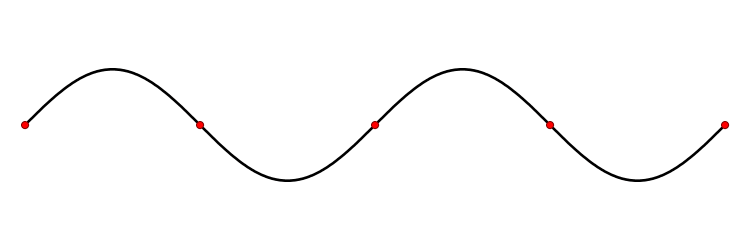
The shape of a standing wave in a string fixed at its boundaries is an example of an eigenfunction of a differential operator. The admissible eigenvalues are governed by the length of the string and determine the frequency of oscillation.
───
或可領會
終於譜出了『傅立葉分析』之美麗花朵︰
在一輛長列『左行』的火車上有一個很長的『水槽』,上有一向右的『行進波』

,假使向左的火車與向右之水波速度相同,那麼一位站在月台的『觀察者』 將如何描述那個『行進波』的呢?
如果觀察水由水龍頭注入水槽的現象,由於水在到達槽底前的流速『較快』,然而到達槽底後水的流速突然的『變慢』,因此會發生『水躍』Hydraulic jump 的現象,此時水之部份動能將轉換為位能,故而在槽底的液面形成『駐波』。這個現象在『河水』的『流速』突然『由快變慢』時也可能發生,因而有人能在『河裡衝浪』,他正站在『駐波』之上!!
那什麼是『駐波』的呢?比方說一個『不動的』stationary 介質中,向左的波  與向右的波
與向右的波  疊加後的『合成波』
疊加後的『合成波』 ,在『特定』的『邊界條件』下,被『侷限』在一定『空間區域』內無法前進,因此稱為『駐波』。由於駐波不能傳播能量,它的能量將『儲存』在那個空間區域裡。駐波所在區域,『振幅為零』的點稱為『節點』或『波節』Node ,『振幅最大』的點位於兩『節點』之間,通常叫做『腹點』或『波腹』Antinode。
,在『特定』的『邊界條件』下,被『侷限』在一定『空間區域』內無法前進,因此稱為『駐波』。由於駐波不能傳播能量,它的能量將『儲存』在那個空間區域裡。駐波所在區域,『振幅為零』的點稱為『節點』或『波節』Node ,『振幅最大』的點位於兩『節點』之間,通常叫做『腹點』或『波腹』Antinode。
─── 琴弦擇音而振, 苟非知音焉得共鳴。───
───
當更能了解那些滿足  『波長』關係的『頻率』構成了那根『弦』的『泛音』。不同『音色』的『弦』正因此『泛音』頻譜不同而出色。或也將知這也是『正交函數族』 Orthogonal functions 的發展以及『傅立葉級數』之歷史濫觴乎︰
『波長』關係的『頻率』構成了那根『弦』的『泛音』。不同『音色』的『弦』正因此『泛音』頻譜不同而出色。或也將知這也是『正交函數族』 Orthogonal functions 的發展以及『傅立葉級數』之歷史濫觴乎︰
In the language of Hilbert spaces, the set of functions { ; n ∈ Z} is an orthonormal basis for the space L2([−π, π]) of square-integrable functions of [−π, π]. This space is actually a Hilbert space with an inner product given for any two elements f and g by
; n ∈ Z} is an orthonormal basis for the space L2([−π, π]) of square-integrable functions of [−π, π]. This space is actually a Hilbert space with an inner product given for any two elements f and g by

The basic Fourier series result for Hilbert spaces can be written as

- This corresponds exactly to the complex exponential formulation given above. The version with sines and cosines is also justified with the Hilbert space interpretation. Indeed, the sines and cosines form an orthogonal set:

- Sines and cosines form an orthonormal set, as illustrated above. The integral of sine, cosine and their product is zero (green and red areas are equal, and cancel out) when m, n or the functions are different, and pi only if m and n are equal, and the function used is the same.
-


(where δmn is the Kronecker delta), and

furthermore, the sines and cosines are orthogonal to the constant function 1. An orthonormal basis for L2([−π,π]) consisting of real functions is formed by the functions 1 and √2 cos(nx), √2 sin(nx) with n = 1, 2,… The density of their span is a consequence of the Stone–Weierstrass theorem, but follows also from the properties of classical kernels like the Fejér kernel.
───
若非如此,樂器將如何和鳴共奏呢?或終可聞箱子天籟之聲的耶 ??!!
將通
In mathematics and signal processing, an analytic signal is a complex-valued function that has no negative frequency components.[1] The real and imaginary parts of an analytic signal are real-valued functions related to each other by the Hilbert transform.
The analytic representation of a real-valued function is an analytic signal, comprising the original function and its Hilbert transform. This representation facilitates many mathematical manipulations. The basic idea is that the negative frequency components of the Fourier transform (or spectrum) of a real-valued function are superfluous, due to the Hermitian symmetry of such a spectrum. These negative frequency components can be discarded with no loss of information, provided one is willing to deal with a complex-valued function instead. That makes certain attributes of the function more accessible and facilitates the derivation of modulation and demodulation techniques, such as single-sideband. As long as the manipulated function has no negative frequency components (that is, it is still analytic), the conversion from complex back to real is just a matter of discarding the imaginary part. The analytic representation is a generalization of the phasor concept:[2] while the phasor is restricted to time-invariant amplitude, phase, and frequency, the analytic signal allows for time-variable parameters.
Definition
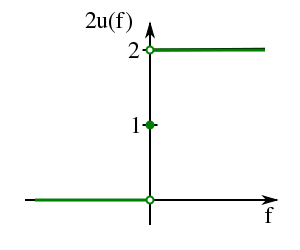
Transfer function to create an analytic signal
If  is a real-valued function with Fourier transform
is a real-valued function with Fourier transform  , then the transform has Hermitian symmetry about the
, then the transform has Hermitian symmetry about the  axis:
axis:
-

where  is the complex conjugate of
is the complex conjugate of  . The function:
. The function:
-

where:
contains only the non-negative frequency components of  . And the operation is reversible, due to the Hermitian symmetry of
. And the operation is reversible, due to the Hermitian symmetry of  :
:
-
![{\begin{aligned}S(f)&={\begin{cases}{\frac {1}{2}}S_{{\mathrm {a}}}(f),&{\text{for}}\ f>0,\\S_{{\mathrm {a}}}(f),&{\text{for}}\ f=0,\\{\frac {1}{2}}S_{{\mathrm {a}}}(-f)^{*},&{\text{for}}\ f<0\ {\text{(Hermitian symmetry)}}\end{cases}}\\&={\frac {1}{2}}[S_{{\mathrm {a}}}(f)+S_{{\mathrm {a}}}(-f)^{*}].\end{aligned}}](https://wikimedia.org/api/rest_v1/media/math/render/svg/641488b89157adff28b410cdd5db079397e49e42)
The analytic signal of  is the inverse Fourier transform of
is the inverse Fourier transform of  :
:
-
![{\displaystyle {\begin{aligned}s_{\mathrm {a} }(t)&{\stackrel {\mathrm {def} }{{}={}}}{\mathcal {F}}^{-1}[S_{\mathrm {a} }(f)]\\&={\mathcal {F}}^{-1}[S(f)+\operatorname {sgn}(f)\cdot S(f)]\\&=\underbrace {{\mathcal {F}}^{-1}\{S(f)\}} _{s(t)}+\overbrace {\underbrace {{\mathcal {F}}^{-1}\{\operatorname {sgn}(f)\}} _{j{\frac {1}{\pi t}}}*\underbrace {{\mathcal {F}}^{-1}\{S(f)\}} _{s(t)}} ^{\text{convolution}}\\&=s(t)+j\underbrace {\left[{1 \over \pi t}*s(t)\right]} _{\operatorname {\mathcal {H}} [s(t)]}\\&=s(t)+j{\hat {s}}(t),\end{aligned}}}](https://wikimedia.org/api/rest_v1/media/math/render/svg/bb9ace77303dfad71f6d7dddfd26acddb2d510ac)
where
Applications
Envelope and instantaneous phase
An analytic signal can also be expressed in polar coordinates, in terms of its time-variant magnitude and phase angle:
-

where:
In the accompanying diagram, the blue curve depicts  and the red curve depicts the corresponding
and the red curve depicts the corresponding  .
.
The time derivative of the unwrapped instantaneous phase has units of radians/second, and is called the instantaneous angular frequency:
-

The instantaneous frequency (in hertz) is therefore:
-
 [3]
[3]
The instantaneous amplitude, and the instantaneous phase and frequency are in some applications used to measure and detect local features of the signal. Another application of the analytic representation of a signal relates to demodulation of modulated signals. The polar coordinates conveniently separate the effects of amplitude modulation and phase (or frequency) modulation, and effectively demodulates certain kinds of signals.
是『廣義相量』
─── 摘自《【Sonic π】電聲學補充《二》》
命名無涉『解析函數』也◎
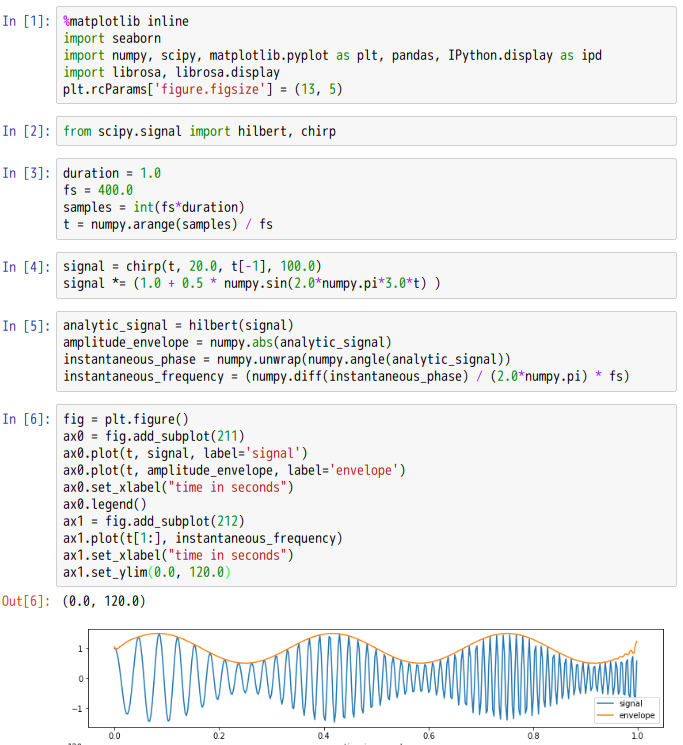

※ 註
scipy.signal.hilbert(x, N=None, axis=-1)- Compute the analytic signal, using the Hilbert transform.
The transformation is done along the last axis by default.
| Parameters: |
x : array_like
Signal data. Must be real.
N : int, optional
Number of Fourier components. Default: x.shape[axis]
axis : int, optional
Axis along which to do the transformation. Default: -1.
|
| Returns: |
xa : ndarray
Analytic signal of x, of each 1-D array along axis
|
Notes
The analytic signal x_a(t) of signal x(t) is:
where F is the Fourier transform, U the unit step function, and y the Hilbert transform of x. [R271]
In other words, the negative half of the frequency spectrum is zeroed out, turning the real-valued signal into a complex signal. The Hilbert transformed signal can be obtained from np.imag(hilbert(x)), and the original signal from np.real(hilbert(x)).
References
| [R272] |
Leon Cohen, “Time-Frequency Analysis”, 1995. Chapter 2. |
| [R273] |
Alan V. Oppenheim, Ronald W. Schafer. Discrete-Time Signal Processing, Third Edition, 2009. Chapter 12. ISBN 13: 978-1292-02572-8 |
![]() 派︰雖然夏日天光長,一溜眼兒就過。欲用『十二律 』通『五聲調式』,得加緊腳步。更別說,尚不知那『蜂鳴器』它到底行是不行?!
派︰雖然夏日天光長,一溜眼兒就過。欲用『十二律 』通『五聲調式』,得加緊腳步。更別說,尚不知那『蜂鳴器』它到底行是不行?!_1.png)
_2.png)
_3.png)




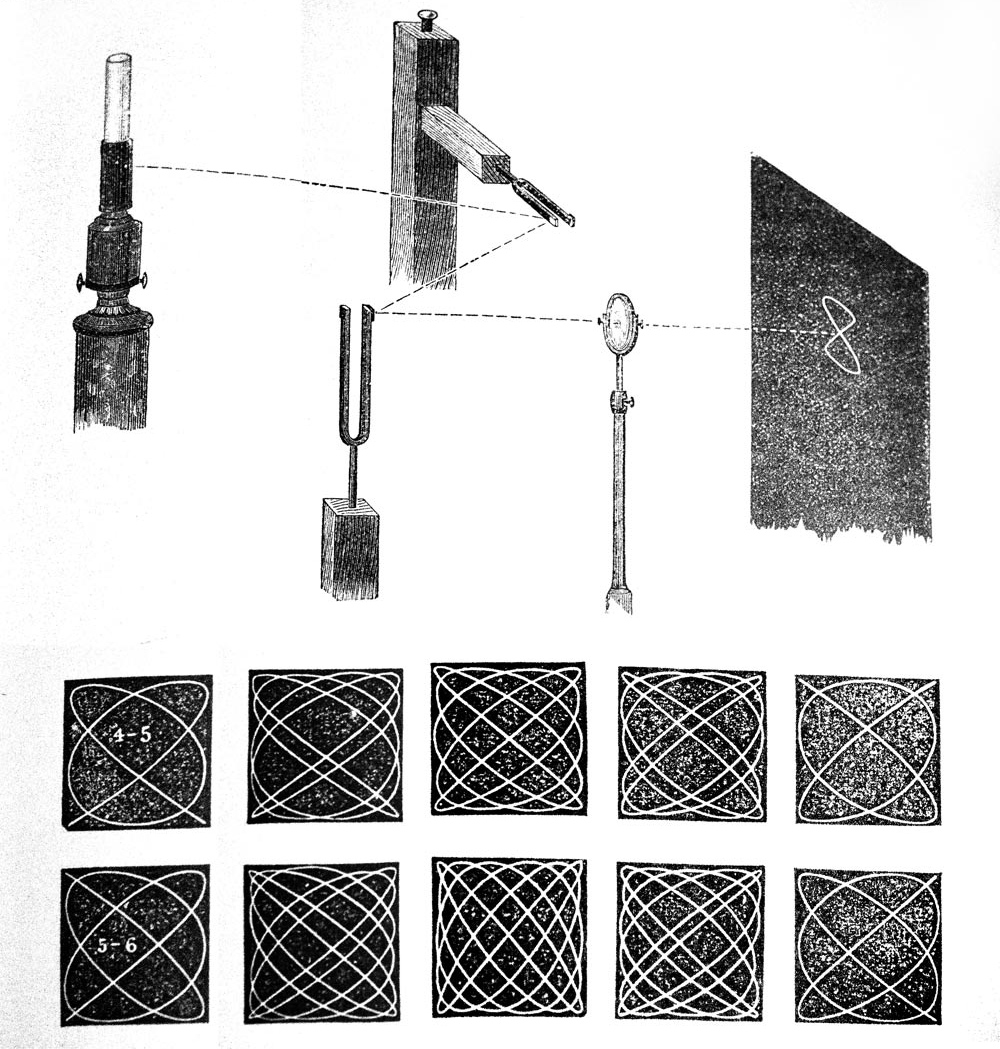
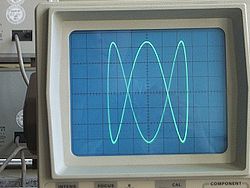
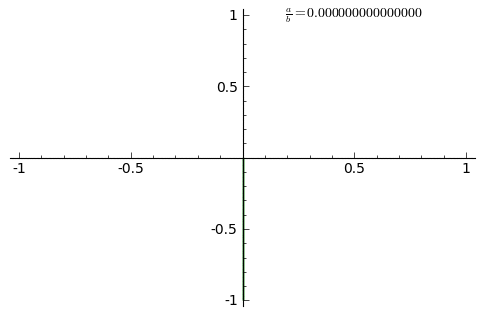


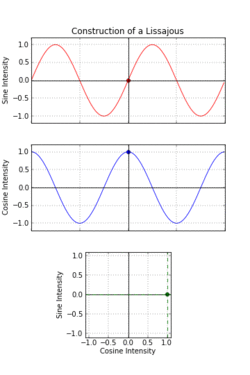
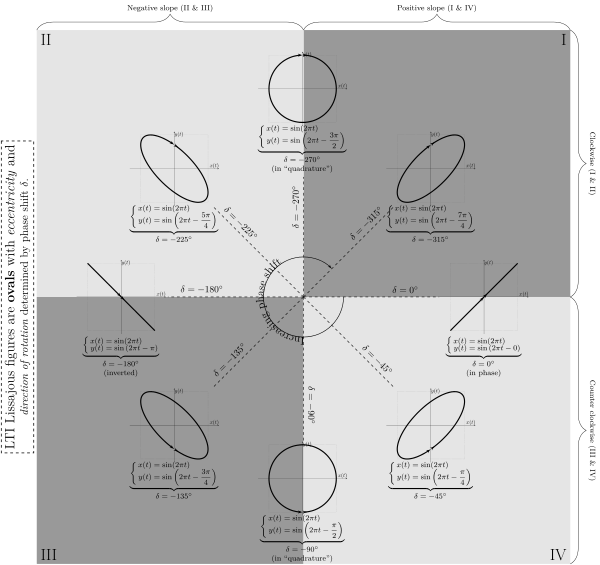
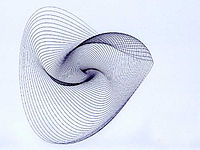
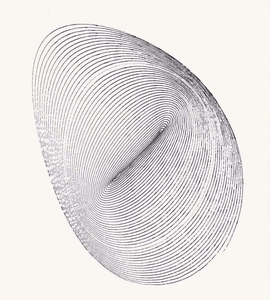
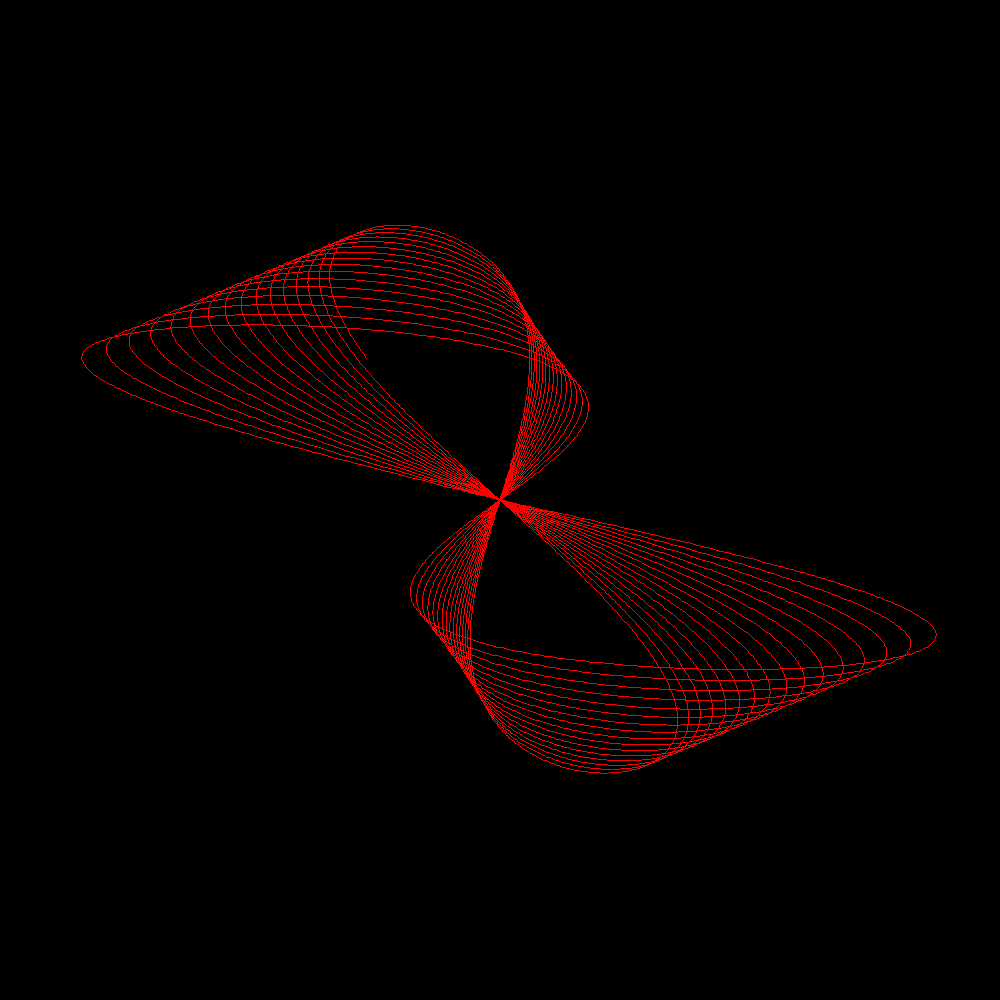
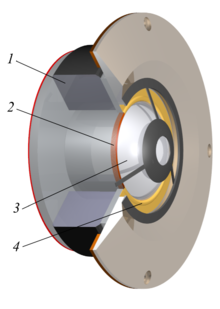
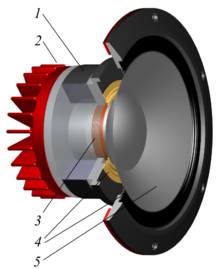
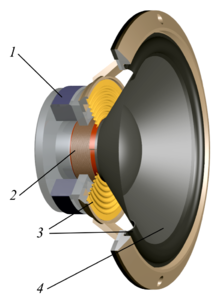
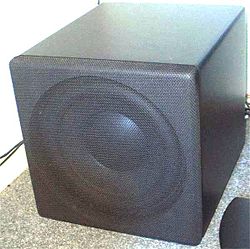


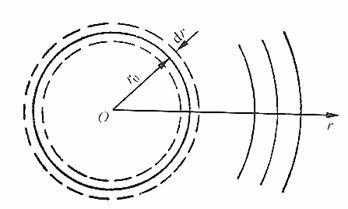
![\sqrt [12] {2}](https://upload.wikimedia.org/math/7/0/b/70b8b8fc763c20423a65bd934e378085.png) ,因此自乘12次後只得 1.98556,不是2,八度走了音,他的系統只可算近似十二音階平均律
,因此自乘12次後只得 1.98556,不是2,八度走了音,他的系統只可算近似十二音階平均律![\sqrt [12] {1/2}](https://upload.wikimedia.org/math/e/7/a/e7a14fb08396757b493af39425a5917d.png) 計算十二平均律,但因計算精度不夠,他算出的弦長數字,有些偏離正確數字一至二單位之多
計算十二平均律,但因計算精度不夠,他算出的弦長數字,有些偏離正確數字一至二單位之多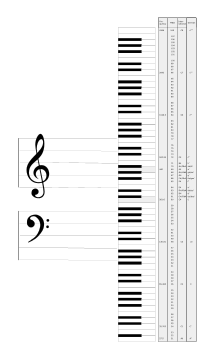

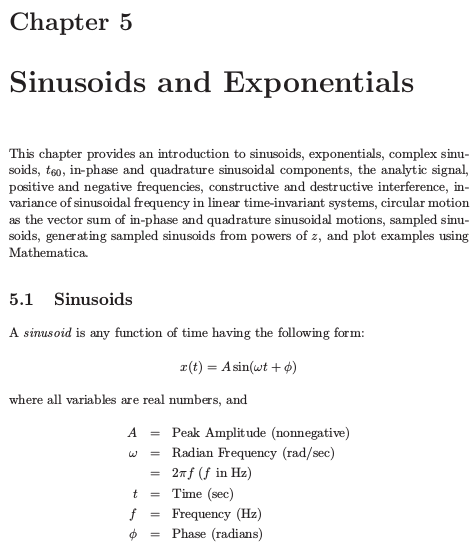
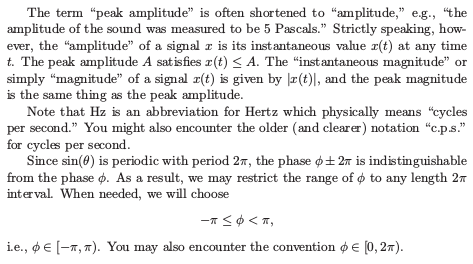
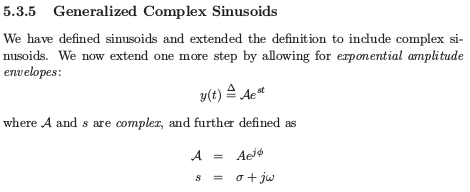
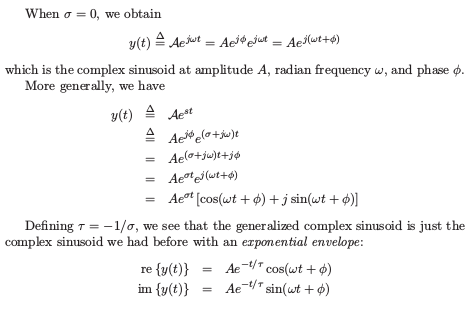
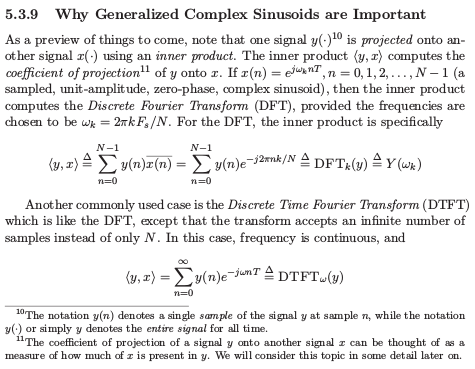
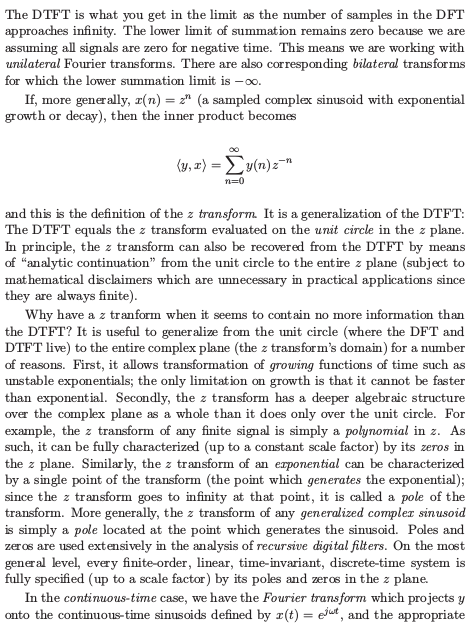
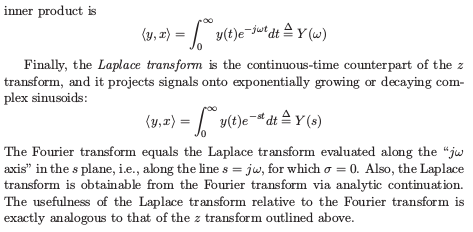
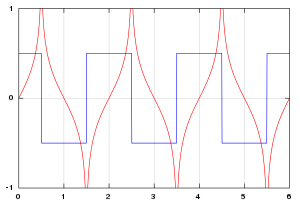
_1.png)
_2.png)




 and
and 






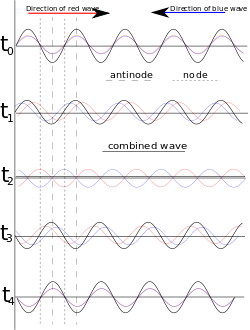



 ; n ∈ Z} is an
; n ∈ Z} is an 







![{\begin{aligned}S(f)&={\begin{cases}{\frac {1}{2}}S_{{\mathrm {a}}}(f),&{\text{for}}\ f>0,\\S_{{\mathrm {a}}}(f),&{\text{for}}\ f=0,\\{\frac {1}{2}}S_{{\mathrm {a}}}(-f)^{*},&{\text{for}}\ f<0\ {\text{(Hermitian symmetry)}}\end{cases}}\\&={\frac {1}{2}}[S_{{\mathrm {a}}}(f)+S_{{\mathrm {a}}}(-f)^{*}].\end{aligned}}](https://wikimedia.org/api/rest_v1/media/math/render/svg/641488b89157adff28b410cdd5db079397e49e42)
![{\displaystyle {\begin{aligned}s_{\mathrm {a} }(t)&{\stackrel {\mathrm {def} }{{}={}}}{\mathcal {F}}^{-1}[S_{\mathrm {a} }(f)]\\&={\mathcal {F}}^{-1}[S(f)+\operatorname {sgn}(f)\cdot S(f)]\\&=\underbrace {{\mathcal {F}}^{-1}\{S(f)\}} _{s(t)}+\overbrace {\underbrace {{\mathcal {F}}^{-1}\{\operatorname {sgn}(f)\}} _{j{\frac {1}{\pi t}}}*\underbrace {{\mathcal {F}}^{-1}\{S(f)\}} _{s(t)}} ^{\text{convolution}}\\&=s(t)+j\underbrace {\left[{1 \over \pi t}*s(t)\right]} _{\operatorname {\mathcal {H}} [s(t)]}\\&=s(t)+j{\hat {s}}(t),\end{aligned}}}](https://wikimedia.org/api/rest_v1/media/math/render/svg/bb9ace77303dfad71f6d7dddfd26acddb2d510ac)




![\phi (t){\stackrel {{\mathrm {def}}}{{}={}}}\arg \!\left[s_{{\mathrm {a}}}(t)\right]](https://wikimedia.org/api/rest_v1/media/math/render/svg/17665909218975f34e9917c7312a4d051f15afbd)




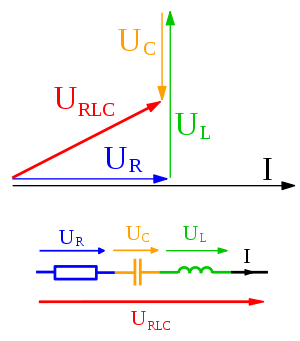
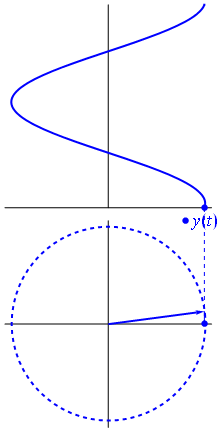


_1.png)
_2.png)
